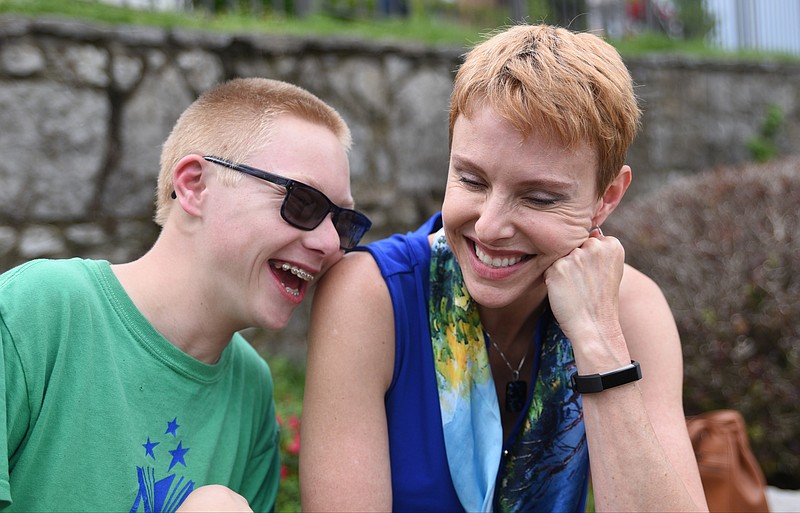It is yet another knock on Hamilton County Schools that it took a federal judge's ruling to make the system's leadership fully aware that we have been violating multiple federal guidelines meant to protect students with disabilities.
Worse, it's not as though Hamilton County educators didn't know the rules.
Nonetheless, it took a determined family from Chattanooga to force the issue with a lawsuit filed in early 2014 against both the county school district and the Tennessee Department of Education. The suit - filed on behalf of Deborah and Greg Hyde and their son, Luka, who has Down syndrome - claimed that Hamilton County was over-segregating disabled students, despite findings and guidelines that show including those students in regular classrooms with appropriate support benefits all students, and helps close the achievement gap.
On Monday, U.S. District Judge Curtis Collier ruled against Hamilton County Schools, saying the district violated the Americans with Disabilities Act and Section 504 of the Rehabilitation Act, a federal civil rights law.
Yet against all reasonable understanding and other odds (Collier had ruled against the school system before), Hamilton County still stuck by the bad decisions made by teachers and then Normal Park Elementary School Principal Jill Levine when they removed Luka from a second-grade class there in 2013.
Court documents and testimony show the teachers and Levine, now Hamilton County's chief academic officer, decided Luka needed to be moved out of Normal Park and segregated into a comprehensive development classroom - a special education class - at Red Bank Elementary School. They said he was struggling to make academic gains, and they said they thought the move would provide him with more personalized instruction and support.
Translation: His interactions with ordinary students would be limited and his curriculum would be more focused on developing life skills, all despite decades of research that show the benefits of including students with disabilities in regular classrooms.
Of course, some might argue that moving many of the system's 5,587 students with disabilities - 12.6 percent of Hamilton County's 44,000 students - out of mainstream classrooms and into special education classrooms also would raise school and system test scores, something Hamilton County Schools have been desperately trying to do in recent years.
Yet now statistics would indicate Hamilton County could be added to those decades of research: Segregating many of those students out of the regular classrooms did little to help local scores. Overall, 60 percent of our system's third-graders still can't read at grade level, and 62 percent of our graduates are not deemed jobs-ready.
It doesn't have to be like this, and our Hamilton County system even had a role model as close by as Nashville.
Metro Nashville Public Schools began transforming its approach to special education in 2009.
At that time, Nashville schools as a whole had one of the lowest percentages of students with disabilities in mainstream education classrooms in the state, and the result was large achievement gaps between those groups of students.
The Nashville district began requiring every school to offer a full slate of services for students with disabilities and focused on including students in regular classrooms as much as possible with the proper supports.
Today, more than 70 percent of Nashville students in each disability category are receiving meaningful instruction in general education classrooms at least 80 percent of the day, and the achievement gap is closing.
In Hamilton County public schools, it is almost completely opposite: About 80 percent of students with intellectual disabilities are separated from nondisabled students for most of the school day, according to data from the Tennessee Department of Education. And what does standardized testing data from 2015 show? In each tested subject, students with disabilities trailed their nondisabled peers by about 30 percentage points.
The Hydes had to sell their home to put Luka in mainstream classes at the Montessori School and pay for a specialty lawyer to handle a lawsuit that has now dragged on for years. They did it for their son, and Luka, now 13, will be enrolled in middle school classes this fall. Others now hopefully will benefit, as well.
The only thing more damning than our school system's systematic violation of disabled students' rights is the fact that in discriminating, though without intent, our school leaders gave themselves the false excuse that they were helping students.
The sad reality is that no child has been benefiting, and a whopping majority of our children have been and are being left behind.
